Pictured: Intel and Qualcomm to offer 5G Modules for M.2 Slots
by Ian Cutress on March 4, 2019 9:10 AM EST
Last week we reported on that Fibocom, an Intel partner, had announced a new M.2 module featuring the Intel XMM8160 5G modem to be used in CPEs as well as upcoming PCs and laptops. During the Mobile World Congress show, we actually saw this M.2 module on the Fibocom booth, but to our surprise, we also saw a similar M.2 module for Qualcomm’s X55 modem over at the Qualcomm booth.
These modules fit the widest possible M.2 standard, coming in at 30mm wide, which is 8mm wider than the storage based drives we normally see in this form factor. When looking at the Fibocom module first, it was unclear why the module had to be this wide – surely the modem as not 30mm wide, I thought. At the Fibocom booth, we also got hold of a specification list, confirming that the module was to support both SA and NSA networks, and also cover both 5G in the mmWave bands as well as sub 6 GHz.
The specification sheet at Fibocom’s booth gave a full run-down of what this module, and by the fact that it uses Intel’s XMM8160 modem, including what bands it supports.
- 5G NR Sub-6 Bands: n1, n2, n3, n4, n5, n6, n20, n28a, n28b, n38, n41, n66, n71, n77, n78, n79
- 5G mmWave: n257, n261, n260
- 5G NR SUL: n80, n81, n82, n83, n84
It also included LTE / others:
- LTE FDD: 1, 2, 3, 4, 5, 6, 7, 12, 13, 14, 17, 18, 19, 20, 25, 26, 28a, 28b, 29, 30, 32, 66, 71
- LTE TDD: 34, 38, 39, 40, 31, 42, 48
- LAA: 46
- UMTS: 1, 2, 4, 5, 8
The unit will support 2x2 MIMO, 4x2 MIMO, and 4x4 MIMO modes for download, but only 2x2 MIMO for upload. The 4x4 MIMO download mode will only be applicable on bands 1, 2, 3, 4, 7, 25, 30, 34, 38, 39, 40, 41, 42, 48, 66, n77, n78, n79. The unit also integrates support for GPS, GLONASS, Beidou, and Galileo. Drivers will be available for both Windows 10 and Linux.
In terms of overall peak speaks, Fibocom lists the module as supporting download speeds of 2.4 Gbps LTE, 4 Gbps sub-6, and up to 6 Gbps in mmWave. This is more honest than the speeds reported to date of ‘up to 7 Gbps’, which is the maximum of potential combinations of both LTE and mmWave being used simultaneously. For upload, the module will support 450 Mbps on LTE, ~2.5 Gbps on sub-6, and ~3.0 Gbps on mmWave.
When speaking to the Fibocom representative on the booth, he stated that he expects the module to be used in devices in 2020, and they’re waiting for the hardware, software, and transceiver setup to be finalized, although he wasn’t able to say exactly when this would be. Fibocom has been a partner with Intel on 4G modems, and have supplied LTE units for lots of access points and to laptop manufacturers such as Dell, HP, and Lenovo. We should expect something similar when it comes to 5G, but only in 2020 and beyond.
The Qualcomm X55 modem module, by comparison, was a bit different. We are still talking about a similar 30mm wide module, but it appears that Qualcomm has several partners that will be making the modules depending on specific customer requirements. Telit, for example, had two modules, the FM980 and FM980m, which differ in size:
Quectel also had its own module, but also offered the modem in a large BGA package:
While the details of the X55 modem support were not on display, we were able to see an M.2 module without the EMI shield. Apologies for the exposure balance here – the module was on an LED lit panel from below and behind a plastic screen, making any photography really difficult.
The chip on the far left is the X55 modem, which is clearly a lot smaller than the 30mm width of the module. Below it seems to be a sizeable amount of DRAM, and above it is a power management controller perhaps? This side is clearly the digital signal part of the design, as there seems to be some PCB separation to the analog side to the right. I’m counting 10 different chips here, likely to deal with signals coming in. This goes out to the five antenna connections on the right (the Fibocom module had eight, the Qualcomm partners had four).
Smartphones are not the only deployment vectors for 5G modems, and we’re likely to see Mi-Fi and laptop deployments consume a fair few as well. When we interviewed Qualcomm’s President, Cristiano Amon, at the company’s Tech Summit late last year, he saw 5G being used in the suburbs being used instead of the last mile of cable from the cabinet to the home, removing the need for a cable completely. When and if mobile data costs can become as low as wired home connection data costs, this could very well become one key enablement of 5G.
Related Reading


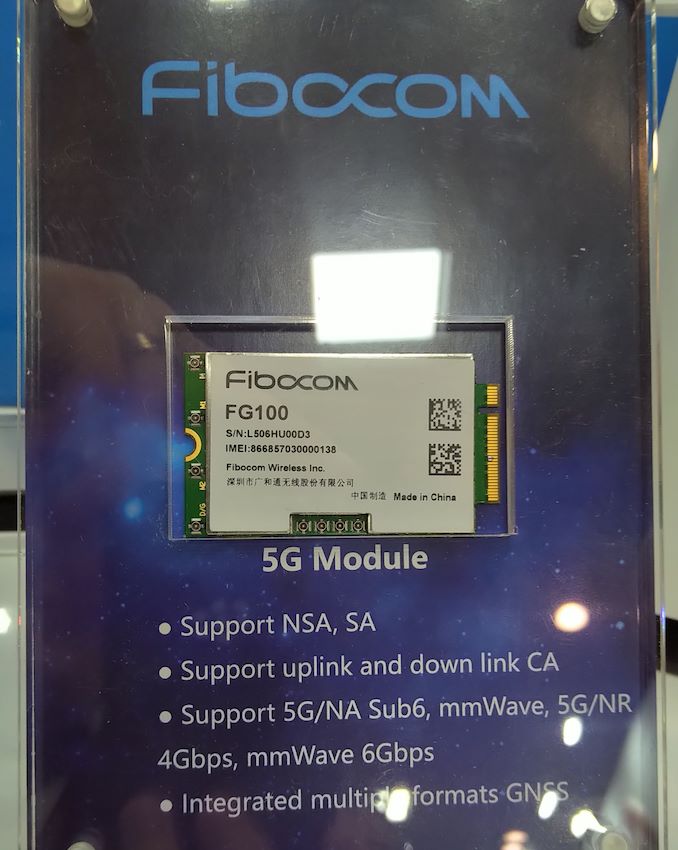
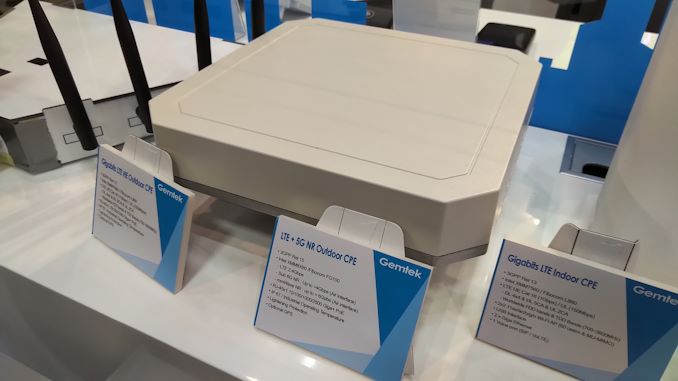
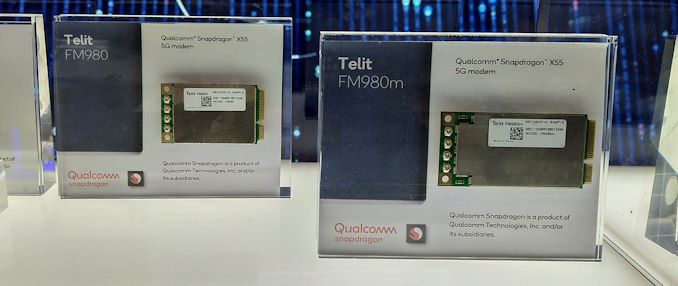
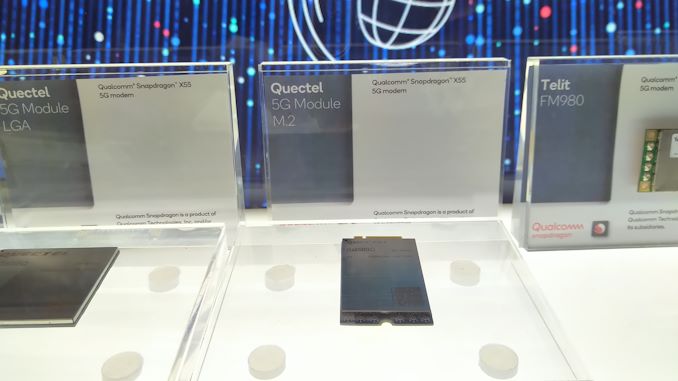
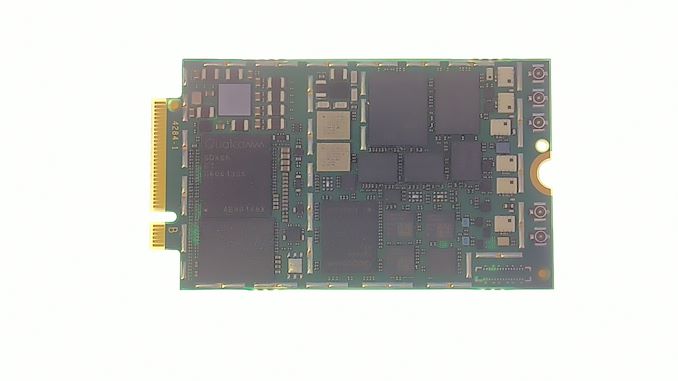
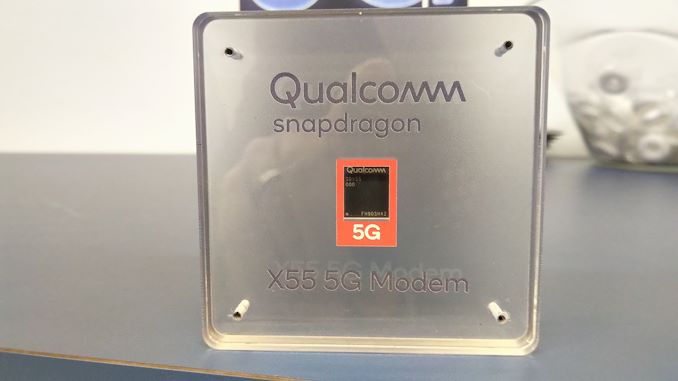








21 Comments
View All Comments
Ian Cutress - Monday, March 4, 2019 - link
As a foreign traveller to Taiwan: unlimited LTE SIM for two weeks is ~$20.eastcoast_pete - Monday, March 4, 2019 - link
That is an Ok price. Maybe it's one of the reasons that LTE modems seem to be more in demand there than here in the US or in Europe. Another example how a dysfunctional market w/o real competition (mobile carrier oligopoly) prevents widespread adoption of newer technology.r3loaded - Tuesday, March 5, 2019 - link
FWIW, I currently pay £14/month for 12GB of LTE data. If I wanted unlimited data, it would still only be £27/month. And the UK isn't exactly the best in Europe, you can get even cheaper in other countries!DanNeely - Monday, March 4, 2019 - link
I'm surprised by the form factor too. I don't think I've seen a 30mm wide m.2 device ever, and had always assumed it was in the spec just as a bone tossed to companies with legacy mini-pci/msata devices in that they could theoretically swap IO without having to redesign the rest of their PCB.Looking at it, I'm assuming the modules are 30x42mm, which gives an area of 1260mm, which is just 5% smaller than a conventional 22x60mm module at 1320. Using an uncommon form factor has to be imposing a tooling cost so I doubt it's actually saving anything. Maybe the squarer form factor lets them manage PCB trace lengths better? I hope you can get a statement out of one of the manufacturers to clarify why they're doing it this way.
HStewart - Monday, March 4, 2019 - link
I am excite about Intel's Foveros technology is next evolution of EMiB but this version is 3D in design this would allow 5G chip to be store in same area space of CPU and even GPU.Morawka - Monday, March 4, 2019 - link
I'd rather have the M.2 because it's not guaranteed laptop makers will put forth the engineering required to build out the antenna and amplifier systems that the in-silicon modems require.HStewart - Monday, March 4, 2019 - link
It may not matter too much, 5G technology may not be advance enough to put on CPU chip even with 3d layering. Plus I heard that 5G really deliveries a lot of radiation.Goodspike - Monday, March 4, 2019 - link
Could they design routers to use these? That could help make 5G a cable/DSL alternative.PeachNCream - Monday, March 4, 2019 - link
You may want to read up on 5G's penetration capabilities. Granted, antennas that aren't space-constrained like they are in a phone would offer some measure of help, but there are physical limits to the transmission technologies that make indoor usage seem more likely to fallback to 4G frequency bands. I suppose there's always the option of an external antenna array like we used to use back in the days of broadcast television where we had to rotate the mast atop the house to pick up certain stations more clearly. However to answer your question, yes, there will be 5G routers just as there are 4G models now (commonly referred to as wireless hotspots) though they may use more tightly integrated modem designs that are single board systems.eastcoast_pete - Monday, March 4, 2019 - link
@Ian: I know that it's not directly about 5G technology, but could you or another AT writer summarize and comment on the state of backhaul capabilities in various markets and its impact on fast wireless? What many forget in the excitement over faster LTE and now 5G is that, in order to get the full wireless speed, the receiving (cell) stations have to be able to backhaul those data. Unfortunately, that bandwidth is often painfully low, and underdeveloped. It's like having a 4x4 MIMO > 2 Gb/s AC wireless router hooked up to a 1.5 Mb DSL line - very disappointing.